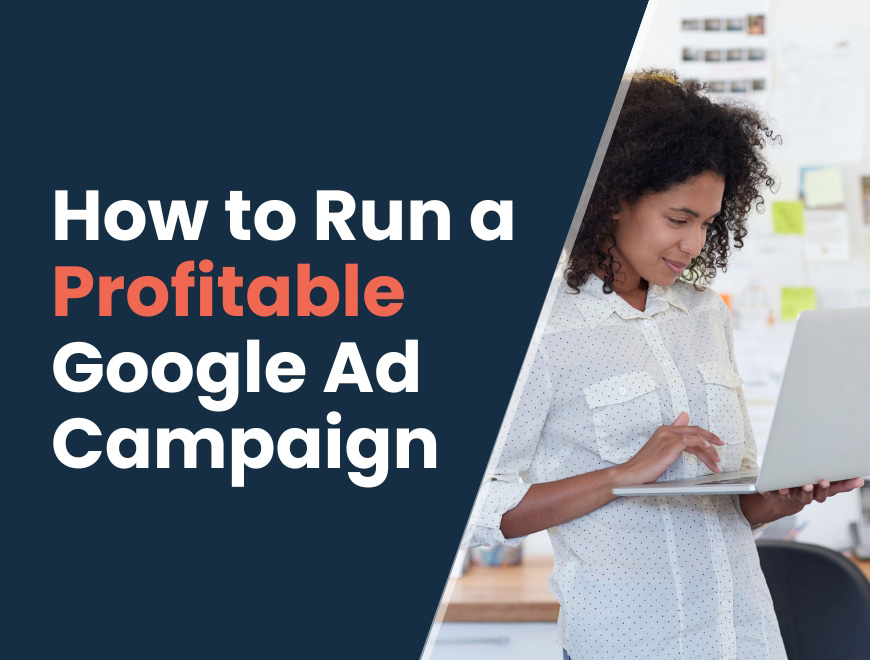Ever wanted to know how to create a $84,000 Monthly Revenue Model? In this blog, I’m sharing my model to do this.
To get started, I’m going to show you what might be the most crucial aspect of marketing that you should define before you begin.
What is it?
It’s setting clear goals.

The Importance of Setting Clear Marketing Goals
Before undertaking a marketing exercise, you must clarify your objectives. Why are you venturing into the world of marketing? What do you want to achieve?
Once you know these answers, you can start creating killer monthly revenue targets, but you have to start with clear goals. Many businesses approach me with vague aspirations of wanting more leads, increased sales, or greater brand recognition. But things often get hazy when I ask them to define their success criteria. It’s essential to pinpoint precisely what you aim to achieve because, without a clear goal, it’s like navigating a ship without a destination in mind.
Imagine this scenario… You invest time and resources into a marketing campaign, which seems to work, but you’re not sure what success looks like. Six months or a year down the line, how can you determine if your marketing is actually paying off?
Defining Your Marketing Objectives – How Many Customers and How Much Revenue?
This right here is where so many businesses fall down. They may not know how many new customers they want or lack a specific revenue target. When I ask, I often get this response: “I want more customers.” While wanting more customers is a valid objective, getting granular and defining precisely what that means is vital.
I’m going to demystify the process of setting marketing goals. I’ll explore what “more customers” really entails – and how to establish numbers and align your efforts to achieve the revenue, sales, and customer figures you genuinely desire.
“So, let’s start with the fundamental question. What do you want?”
How many customers do you want? How much revenue do you want to generate? Do you envision a million dollars in revenue per year, or are you aiming for an extra $10 million annually? Regardless of your aspiration, we can work backward from your goals to chart a clear path forward.
To illustrate this, I’ll introduce two models: business-to-business (B2B) and business-to-consumer (B2C) campaigns. To start, let’s focus on the B2C model, which is a common approach.
Before you read on, ask yourself… ‘How much revenue do I want to add each month or year?’. Keep reading when you have that figure in mind, or even better, on paper.
Working Backwards – A B2C Model for Achieving Your Revenue Targets
So you’ve set a target of adding a million dollars in revenue to your business. Breaking it down means you must bring in approximately $83,333 monthly. Let’s round it up to $84,000.
Now, consider your average revenue per client, which, in this example, is $2,000. This figure represents the revenue generated from each sale to a client. It’s a typical metric for businesses like trades and services, where an average job might cost around $2,000.
With these guiding principles in mind – aiming for $84,000 in monthly revenue and an average client value of $2,000 – we can start working backward to formulate a plan.
Calculating Your Marketing Metrics
Now, let’s dive into what it takes to achieve a $84,000 monthly revenue goal with Google Ads. Given your average revenue per client is $2,000, you’ll need to acquire 42 new customers each month.
Let’s start with a conservative estimate for your sales conversion rate, assuming one in every five sales conversations leads to a closed deal. However, it’s often higher, especially for businesses in the B2C sector, where customers are looking for quick solutions and competitive pricing.
When potential customers search for services like plumbing, air conditioning, or other trades, they often go with the first company that impresses them. The speed of response and the quality of the initial interaction matter a lot. Let’s work with a 20% sales conversion rate for now.
With this conversion rate, you’d require 210 leads monthly to secure those 42 customers since one in five leads turns into a sale. So, how do we generate 210 leads? We need to drive the right traffic to your website.
Assuming your website’s landing page converts at 20%, which is reasonable, it means one in five visitors becomes a lead. To generate 210 leads, you’ll need approximately 1,000 targeted visitors to your website every month.
How Do I Get 1,000 People To Visit My Website?
Using Google Ads, you’ll need to show up in front of 35,000 search queries each month. With a standard click-through rate of 3% (which can be improved but is a good starting point) – you need 35,000 impressions to attract 1,000 clicks.
However, a crucial point to consider … If your business primarily serves a local area, you might not even have 35,000 people actively searching for your services within your immediate vicinity. Setting realistic expectations for your target audience’s size and location is essential.
Hitting the 35,000 impression mark with Google Ads alone may be challenging in this scenario, and you may need to explore additional sources to reach your marketing goals effectively.
‘Setting the right expectations and tailoring your marketing approach to your unique circumstances will be crucial to your success.’
Even if you could boost your click-through rate to 7%, you’ll still need around 15,000 monthly searches, which can be challenging unless you’re in major metros like Sydney or Melbourne, where such search volumes are more likely.
Breaking Down Your Marketing Metrics
Let’s look at the maths for the example above. You can adjust it to your own campaigns as you have the data to do so, but the formula will remain the same.
- You have a $20 cost per click (CPC) in Google Ads (since you’re charged per click)
- You want to generate $84,000 monthly revenue
- You’ll need to invest around $21,000 each month in Google Ads.
- This will result in a Return On Ad Spend (ROAS) X 4
- Your Cost Per Lead (CPL) will be around $100
- Which means that if 1 in 5 convert, or 20%, you are looking at $500 to acquire each customer
These metrics can serve as valuable benchmarks for your marketing campaigns. They are industry-standard figures based on extensive experience running numerous Google Ads campaigns. When setting up your marketing efforts, you can establish these metrics as your benchmarks and goals.
The key advantage of having a benchmark is that you can continually monitor and compare your campaign’s actual performance against these benchmarks. This data-driven approach allows you to assess whether your campaign is on track or needs adjustments.

Vague Aspirations Don’t Lead To Solid Results
One common issue I encounter when discussing marketing campaigns with business owners is a lack of precise metrics. Often, they only have a vague sense of how well their campaign is performing. To make informed decisions, you need concrete data points like customer acquisition costs, conversion rates, and average sales values.
To streamline this process, consider automating data collection and analysis. Set up a dashboard that automatically updates your campaign metrics. This becomes your real-time performance indicator.
Each month, evaluate your campaign against these benchmarks. Identify where you might be falling short. For instance, if your conversion rate is lower than the expected 20%, prioritise improving it before addressing other issues.
Building Landing Pages That Convert
A high-converting landing page is critical, as it ensures visitors take the desired action.
Remember, your landing page has a specific role – and that is to guide visitors toward the next step, not necessarily to close the sale outright. By working backward from your benchmarks, you can refine your marketing strategy and make data-driven decisions for success.
“It’s really about selling the next step, not the final sale.”
When it comes to service-based companies, your website’s primary goal isn’t to close the sale outright. Instead, it should focus on persuading visitors to take the next step, whether that’s scheduling a sales call or requesting a quote. This approach is especially crucial if your business involves service consultations. For e-commerce, the dynamics are different as customers typically make purchases directly online.
Applying the Metrics to Different Platforms
The metrics we’ve explored apply to Google Ads and other platforms like Facebook (Meta). While the fundamental calculations remain the same—aiming for $84,000 in monthly revenue with a 20% conversion rate—you’ll need to adapt them to each platform’s nuances. For Facebook, which charges based on cost per thousand impressions (CPM), you’ll need to factor in a different click-through rate (CTR) and a CPM cost. The key is to maintain your benchmarks and adjust your strategy as needed.
Determining a fixed budget in the realm of SEO is more challenging due to the variable nature of competition. Achieving an $84,000 increase in revenue might involve investing in organic search, but the budget required can vary significantly depending on your industry and competitors. SEO success relies heavily on your ability to outperform competitors in search rankings, making it less predictable than paid advertising.
Adjusting Expectations for Sales Cycles
Consider the length of your sales cycle as you apply these metrics. If your sales cycle stretches over several months, you’ll need to adjust your expectations accordingly. Hitting that $84,000 target right from the start might not be realistic. Resetting expectations becomes vital if your pipeline is empty and you’re aiming for a million dollars in annual revenue. It might take time to see substantial returns. However, you can strategically ramp up your pipeline or increase early-stage deals to speed up the process.
A “deal” in your sales pipeline isn’t just any lead. It’s a lead that’s been carefully qualified based on various factors. Marketing qualified leads (MQLs) represent individuals who, according to the marketing team, show a high probability of converting. This assessment is based on factors like their website interactions, third-party data, AI-driven signals, and more. These MQLs are then passed on to the sales team, who further qualify them. From MQL to a deal in the pipeline, the conversion rate is about 40%.
Now, the question becomes, ‘How do I ensure a steady flow of MQLs and, ultimately, deals in the pipeline?’

Navigating Extended Sales Cycles
The duration of your sales cycle is pivotal in applying these metrics effectively. When your sales cycle spans several months, setting realistic expectations is crucial. Achieving an immediate $84,000 target may not be feasible, especially if your sales pipeline starts from scratch while aiming for a million dollars in annual revenue.
“In these cases, consider recalibrating your expectations and devising strategies to accelerate the process. Strategic adjustments can help you achieve your goals over time.”
Within your sales pipeline, not all leads are created equal. A “deal” is a lead that undergoes rigorous qualification based on multifaceted criteria. Marketing qualified leads (MQLs) represent individuals with a high likelihood of conversion, which are then passed on to the sales team for further evaluation. The conversion rate from MQL to a deal typically hovers around 40%.
Initiating with a Clear End Goal in Sight
Once again, it’s paramount to remember that effective marketing campaigns commence with crystal-clear goals. Determine the number of customers you aspire to acquire, establish revenue targets, and envision your desired metrics one year from now.
Create your marketing strategy by reverse-engineering from these objectives. Consistently monitor your progress, meticulously analyse areas where you may fall short, and drive decision-making based on data. Whether you operate in the B2C or B2B landscape, this approach ensures that every action aligns harmoniously with your ultimate goal.
As always, if you want access to this model for running your personalised calculations or have any queries, don’t hesitate to reach out.




